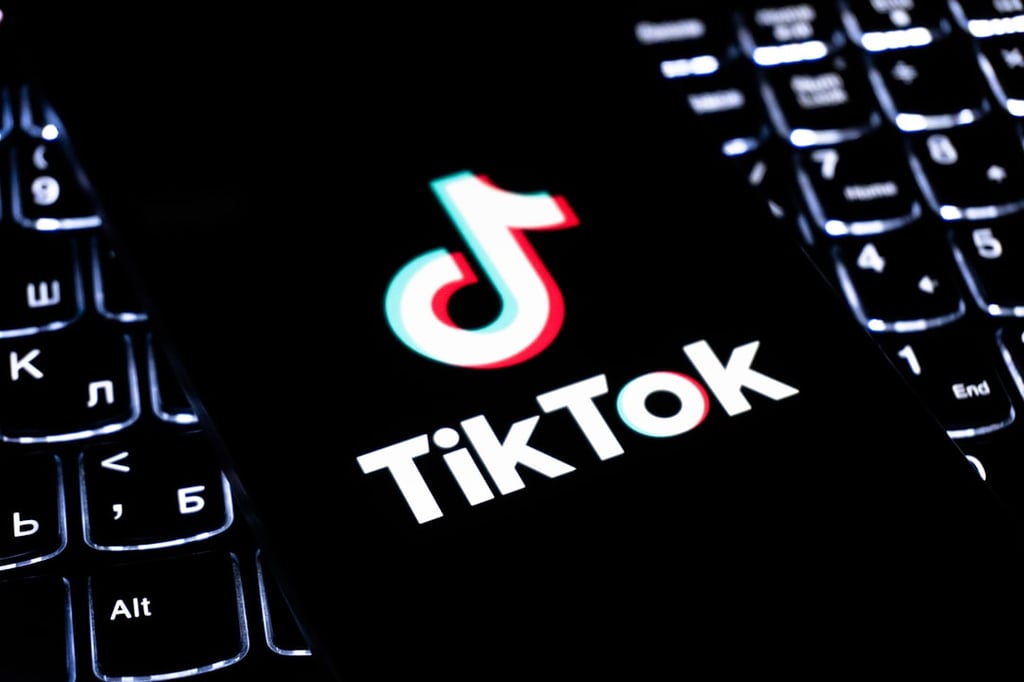I’ll say it as plainly as I can: The iPhone, iPod Touch and iPad succeed mainly because of their user interface.
No, it’s not because of Apple hype, fanboy delusion, media gullibility, dirty tricks or anything else. Apple’s multi-touch user interfaces are appealing to use for reasons most users, reviewers, bloggers and journalists don’t fully understand.
Apple does understand. The company knows how, why, when and where to combine multi-touch, physics and gestures and an enormous repertoire of user interface design elements into something simple and exhilarating to use. They know this because they’ve been working on the problem full-time for seven years, guided by some very clear design sensibilities.
Any “iPad Killer” will have to at least approximate the interface sophistication of the iPad itself. So far, nobody has come even close. Quite the contrary. Competitors thus far have demonstrated a conspicuous lack of emphasis on user interface design. And that’s why they fail.
A year ago, a lot of people thought a Fusion Garage tablet called the CrunchPad, now called the JooJoo, would take on the iPad with its larger screen, open and “cloud-based” approach, and low price. After a year and a half of development, the company finally shipped it. The device was panned by critics. It was an incredible market flop.
The next great hope was Microsoft’s Courier project, a two-screen tablet that I knew as far back as September would never exist. They built some great mockups for how things should work.
But that doesn’t count unless you can actually build a real product and ship it for a price people are willing to pay. I could build a mockup of a nuclear-powered jetpack with a built-in cup-holder. But my CGI wouldn’t end the automobile era.
Some thought a project from HP called the Slate might “kill” the iPad, but that was another ill-fated attempt. Ultimately, the HP Slate was a Windows 7 PC with only 1 GB of RAM. Gimme a break. Worse, the tablet had multi-touch, but not physics or gestures. That’s like making a blockbuster movie, but without sound. No wonder they killed it.
The latest “iPad Killer” is another project that doesn’t exist. The Wall Street Journal this week interviewed Verizon Wireless Chief Executive Lowell McAdam, who said Verizon Wireless and Google are “working on tablets together.” What does that mean?
Does that mean Verizon and Google have secretly formed a separate interface design company, and used their deep pockets to raid interface labs at universities to find the innovators in multi-touch design? Well, no. It probably means some suits had a meeting and decided to pursue some hasty product development based on the belief that duplicating the iPad experience looks easy enough.
(Google is also working with several hardware manufacturers to build Android-based tablets.)
Research In Motion (RIM) had reportedly planned an Android tablet for this year, but the company has apparently decided to do one based on its own operating system and ship it some time next year.
A universe of Chinese shanzai knock-offs, pen-based Windows-powered Tablet PC devices, no-name hardware-centric wanna-bes — none of these are going to succeed until someone steps up and builds a sophisticated touch user interface with multi-touch, physics and gestures that thrills the mainstream public.
All the failures, and all the false hopes for those failures, are based on the flawed assumption that multi-touch user interface design isn’t all that hard or important. It’s based on the flawed assumption that specs — USB ports, camera and multitasking, for example — are more important than user interface design.
These panicked, cobbled together projects aren’t going to compete. If we’re serious about saving the world from the iPad, we’ve got to get the right people involved. Unfortunately, the interface innovators aren’t working on an iPad competitor, and the iPad competitors aren’t employing interface innovators, for the most part.
If history is a reliable guide, HP, Google, Verizon, HTC, RIM, ASUS and the rest are not going to build a more sophisticated touch interface than Apple.
Palm, which is now owned by HP, theoretically has a chance. The Palm Pre has a lot of very sophisticated interface design elements built in. It offers real multi-touch, physics and gestures. Transferred to a tablet with the right specs, I believe the Palm group now at HP has a shot.
Microsoft Research and the Microsoft Surface team have developed some breathtaking innovations. But the company is blinded by a top-down bias for pen-based tablets, which have failed in the market. Still, Microsoft has all the parts in house for a successful effort, especially if it combined pen and touch input.
The company with the design talent that may be superior even to Apple’s, however, is Perceptive Pixel. That company makes the multi-touch systems you see on news programs, and occasionally at airports. They really know what they’re doing. To the best of my knowledge, however, Perceptive Pixel has shown no inclination to build a portable device, especially a low-cost one.
Why This is Urgent
Microsoft Office 2010 hits in June. You’ll buy it, and you’ll use it, if you’re like most people. Resistance is futile. Microsoft dominates the office suites category with 94 percent of the market.
Depending on whom you ask, Google owns between 5% and 1% of the market with its Google Docs suite. This doesn’t make sense. Google Docs does most of the things that most people need from an office suite.
Google Docs is either free or very inexpensive, while Microsoft Office is pretty expensive. Office 2010 will cost between $119 and $499. Think about that. Microsoft has 94% of a totally mainstream market, and a price tag in the hundreds of dollars. It’s like printing money.
Google has announced some high-visibility “wins” for Docs. But if you eliminate the tire kickers, freebie grabbers and casual users, the number of real people paying for and actively using Docs as their primary or exclusive office suite amounts to a rounding error.
Microsoft Office has dominated the category and will continue to dominate because nobody else stepped forward at the right time to provide a comparable experience for users, developers and businesses.
Now that we have great alternatives, Office is such an embedded standard — plus it still provides a better experience for most people — that there’s no dislodging it, even with enormous price disparities.
If you have a job, chances are somebody is going to send you Office documents and expect you to modify them and send them back in a perfectly compatible format. Can competitive suites retain every aspect of Office documents after converting, then re-converting them? Who knows? Uncertainty benefits Microsoft.
Which Brings Us Back to the iPad / Tablet Market
Don’t look now, but something roughly similar is happening in the burgeoning touch-tablet market. The iPad provides the right experience for the biggest global market: The majority of people who are unskillful with or don’t like PCs.
Apple has probably sold 2 million iPads already, and it hasn’t even starting selling it internationally.
If somebody doesn’t do something quick, the iPad will become the new Microsoft Office — the standard we’ll never be able to get rid of. Every networked, document-based, multi-player, Bluetooth-compatible, social, shared mobile touch tablet app will have to be iPad-compatible to have a prayer at success.
iPads will remain three times more expensive than rivals, and still win almost all the customers.
The future looks grim for real competition in the fast-growing touch tablet market. An iPad killer — or even a serious competitor — is possible. But it had better happen soon — before it’s too late.
ALSO SEE: 50 Coolest iPad Apps (So Far)
AND: Coolest iPad Apps: Top 71 Free iPad Apps
-
Ethics and Artificial Intelligence: Driving Greater Equality
FEATURE | By James Maguire,
December 16, 2020
-
AI vs. Machine Learning vs. Deep Learning
FEATURE | By Cynthia Harvey,
December 11, 2020
-
Huawei’s AI Update: Things Are Moving Faster Than We Think
FEATURE | By Rob Enderle,
December 04, 2020
-
Keeping Machine Learning Algorithms Honest in the ‘Ethics-First’ Era
ARTIFICIAL INTELLIGENCE | By Guest Author,
November 18, 2020
-
Key Trends in Chatbots and RPA
FEATURE | By Guest Author,
November 10, 2020
-
Top 10 AIOps Companies
FEATURE | By Samuel Greengard,
November 05, 2020
-
What is Text Analysis?
ARTIFICIAL INTELLIGENCE | By Guest Author,
November 02, 2020
-
How Intel’s Work With Autonomous Cars Could Redefine General Purpose AI
ARTIFICIAL INTELLIGENCE | By Rob Enderle,
October 29, 2020
-
Dell Technologies World: Weaving Together Human And Machine Interaction For AI And Robotics
ARTIFICIAL INTELLIGENCE | By Rob Enderle,
October 23, 2020
-
The Super Moderator, or How IBM Project Debater Could Save Social Media
FEATURE | By Rob Enderle,
October 16, 2020
-
Top 10 Chatbot Platforms
FEATURE | By Cynthia Harvey,
October 07, 2020
-
Finding a Career Path in AI
ARTIFICIAL INTELLIGENCE | By Guest Author,
October 05, 2020
-
CIOs Discuss the Promise of AI and Data Science
FEATURE | By Guest Author,
September 25, 2020
-
Microsoft Is Building An AI Product That Could Predict The Future
FEATURE | By Rob Enderle,
September 25, 2020
-
Top 10 Machine Learning Companies 2021
FEATURE | By Cynthia Harvey,
September 22, 2020
-
NVIDIA and ARM: Massively Changing The AI Landscape
ARTIFICIAL INTELLIGENCE | By Rob Enderle,
September 18, 2020
-
Continuous Intelligence: Expert Discussion [Video and Podcast]
ARTIFICIAL INTELLIGENCE | By James Maguire,
September 14, 2020
-
Artificial Intelligence: Governance and Ethics [Video]
ARTIFICIAL INTELLIGENCE | By James Maguire,
September 13, 2020
-
IBM Watson At The US Open: Showcasing The Power Of A Mature Enterprise-Class AI
FEATURE | By Rob Enderle,
September 11, 2020
-
Artificial Intelligence: Perception vs. Reality
FEATURE | By James Maguire,
September 09, 2020
SEE ALL
ARTICLES







